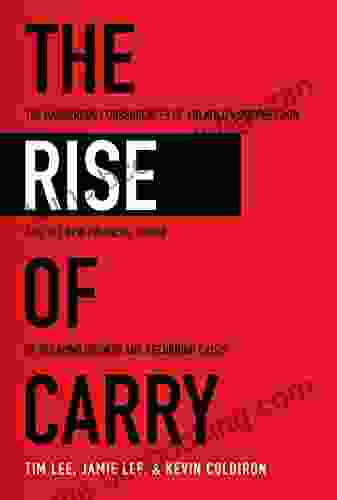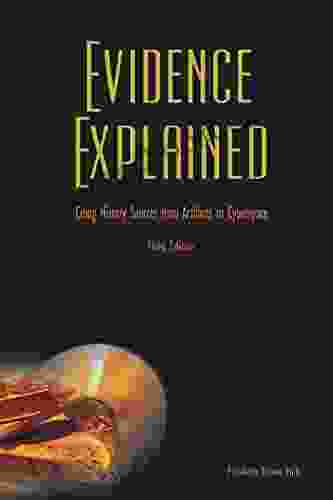The Perilous Consequences of Volatility Suppression: A New Financial Order

In the aftermath of the 2008 financial crisis, central banks around the world embarked on a concerted effort to suppress volatility in financial markets. This policy, known as quantitative easing (QE),involved the Free Download of massive amounts of government and corporate bonds, with the aim of lowering interest rates and stimulating economic growth. While QE may have achieved its short-term objectives, it has also had a number of unintended consequences, including asset bubbles, increased inequality, and a decline in financial stability.
In "The Dangerous Consequences of Volatility Suppression and the New Financial Free Download," former hedge fund manager and financial analyst Satyajit Das argues that the suppression of volatility has created a new financial Free Download that is even more dangerous than the one that led to the 2008 crisis. Das warns that the current environment of low volatility and low interest rates is unsustainable and that it is likely to end in a catastrophic financial crash.
4.5 out of 5
| Language | : | English |
| File size | : | 4334 KB |
| Text-to-Speech | : | Enabled |
| Screen Reader | : | Supported |
| Enhanced typesetting | : | Enabled |
| X-Ray | : | Enabled |
| Word Wise | : | Enabled |
| Print length | : | 240 pages |
| X-Ray for textbooks | : | Enabled |
The Suppression of Volatility
Volatility is a measure of the fluctuations in the price of an asset. It is a natural and healthy part of any financial market. However, in recent years, central banks have taken a number of steps to suppress volatility, including:
- Quantitative easing
- Interest rate cuts
- Currency interventions
These measures have been successful in reducing volatility in the short term. However, they have also had a number of negative consequences, including:
- Asset bubbles
- Increased inequality
- A decline in financial stability
Asset Bubbles
One of the most dangerous consequences of volatility suppression is the creation of asset bubbles. When volatility is low, investors are more likely to take on risk. This can lead to bubbles in asset prices, such as the housing bubble that led to the 2008 financial crisis. Asset bubbles can have a devastating impact on the economy when they burst.
The current environment of low volatility and low interest rates is creating asset bubbles in a number of different markets, including stocks, bonds, and real estate. These bubbles are a major threat to the financial system and could lead to another financial crisis.
Increased Inequality
Another consequence of volatility suppression is increased inequality. When volatility is low, the wealthy are able to accumulate assets more easily than the poor. This is because the wealthy have access to more capital and can take on more risk. As a result, the gap between the rich and the poor is widening.
The current environment of low volatility and low interest rates is exacerbating inequality. The wealthy are able to take advantage of low interest rates to borrow money and invest in assets, while the poor are struggling to make ends meet. This is leading to a widening gap between the rich and the poor.
A Decline in Financial Stability
The suppression of volatility has also led to a decline in financial stability. When volatility is low, investors are less likely to demand a premium for risk. This can lead to a build-up of leverage and other risky behaviors in the financial system. When volatility eventually returns, it can trigger a sudden and sharp sell-off in assets, leading to a financial crisis.
The current environment of low volatility and low interest rates is creating a number of risks to financial stability. These risks include:
- High levels of leverage
- A build-up of risky assets
- A lack of liquidity
These risks could lead to a financial crisis that is even more severe than the 2008 crisis.
The New Financial Free Download
The suppression of volatility has created a new financial Free Download that is characterized by:
- Low volatility
- Low interest rates
- Asset bubbles
- Increased inequality
- A decline in financial stability
This new financial Free Download is unsustainable and is likely to end in a catastrophic financial crash.
The End of the Road
The current environment of low volatility and low interest rates cannot continue indefinitely. Eventually, volatility will return and interest rates will rise. When this happens, the asset bubbles that have been created will burst and the financial system will be destabilized.
The end of the road for the new financial Free Download is likely to be a catastrophic financial crash. This crash could be even more severe than the 2008 crisis.
In "The Dangerous Consequences of Volatility Suppression and the New Financial Free Download," Satyajit Das warns that the suppression of volatility has created a new financial Free Download that is even more dangerous than the one that led to the 2008 crisis. Das argues that the current environment of low volatility and low interest rates is unsustainable and that it is likely to end in a catastrophic financial crash.
Das's warnings should be taken seriously. The new financial Free Download is a ticking time bomb. It is only a matter of time before it explodes.
4.5 out of 5
| Language | : | English |
| File size | : | 4334 KB |
| Text-to-Speech | : | Enabled |
| Screen Reader | : | Supported |
| Enhanced typesetting | : | Enabled |
| X-Ray | : | Enabled |
| Word Wise | : | Enabled |
| Print length | : | 240 pages |
| X-Ray for textbooks | : | Enabled |
Do you want to contribute by writing guest posts on this blog?
Please contact us and send us a resume of previous articles that you have written.
 Book
Book Novel
Novel Page
Page Chapter
Chapter Text
Text Story
Story Genre
Genre Reader
Reader Library
Library Paperback
Paperback E-book
E-book Magazine
Magazine Newspaper
Newspaper Paragraph
Paragraph Sentence
Sentence Bookmark
Bookmark Shelf
Shelf Glossary
Glossary Bibliography
Bibliography Foreword
Foreword Preface
Preface Synopsis
Synopsis Annotation
Annotation Footnote
Footnote Manuscript
Manuscript Scroll
Scroll Codex
Codex Tome
Tome Bestseller
Bestseller Classics
Classics Library card
Library card Narrative
Narrative Biography
Biography Autobiography
Autobiography Memoir
Memoir Reference
Reference Encyclopedia
Encyclopedia Elaine Sciolino
Elaine Sciolino Edward Struzik
Edward Struzik Earnest N Bracey
Earnest N Bracey Elena Kryuchkova
Elena Kryuchkova Kevin Bupp
Kevin Bupp Ingrid Chalufour
Ingrid Chalufour Edmund Nequatewa
Edmund Nequatewa Earl Hatsby
Earl Hatsby Michael K Brantley
Michael K Brantley Tom Stone
Tom Stone Elizabeth Partridge
Elizabeth Partridge Eliza Gaynor Minden
Eliza Gaynor Minden Garett Jones
Garett Jones Edward Leo
Edward Leo Edward C Klatt
Edward C Klatt Edmund S Phelps
Edmund S Phelps Elie Nakouzi
Elie Nakouzi E S Tilley
E S Tilley Moira Miller
Moira Miller Edmund S Wong
Edmund S Wong
Light bulbAdvertise smarter! Our strategic ad space ensures maximum exposure. Reserve your spot today!

 Jeffery BellMastering the Art of French Cuisine: Recipes Reveal the Secrets of Elegant...
Jeffery BellMastering the Art of French Cuisine: Recipes Reveal the Secrets of Elegant... Gerald ParkerFollow ·16.3k
Gerald ParkerFollow ·16.3k Jared NelsonFollow ·16.3k
Jared NelsonFollow ·16.3k Thomas HardyFollow ·10.7k
Thomas HardyFollow ·10.7k Art MitchellFollow ·6.9k
Art MitchellFollow ·6.9k Jimmy ButlerFollow ·14.6k
Jimmy ButlerFollow ·14.6k Holden BellFollow ·19.8k
Holden BellFollow ·19.8k Herb SimmonsFollow ·14.2k
Herb SimmonsFollow ·14.2k Eugene ScottFollow ·10.8k
Eugene ScottFollow ·10.8k

 Clarence Brooks
Clarence BrooksUncover the Secrets in the Dead of Night: Dive into Lee...
Step into the heart-stopping world of Jack...

 Clay Powell
Clay PowellAce the GMAT Grammar Section: Your Last-Minute...
The GMAT is a challenging...

 Salman Rushdie
Salman RushdieEmbark on a Heartwarming Journey with "The All Together...
: Immerse yourself in the charming world of...

 Dawson Reed
Dawson ReedSpring Magic: Stunningly Illustrated Fun for Kids to...
Welcome to the Enchanting World of...

 Bradley Dixon
Bradley DixonGone Tomorrow: A Gripping Thriller by Lee Child that Will...
In the literary realm of thrillers, few...
4.5 out of 5
| Language | : | English |
| File size | : | 4334 KB |
| Text-to-Speech | : | Enabled |
| Screen Reader | : | Supported |
| Enhanced typesetting | : | Enabled |
| X-Ray | : | Enabled |
| Word Wise | : | Enabled |
| Print length | : | 240 pages |
| X-Ray for textbooks | : | Enabled |












